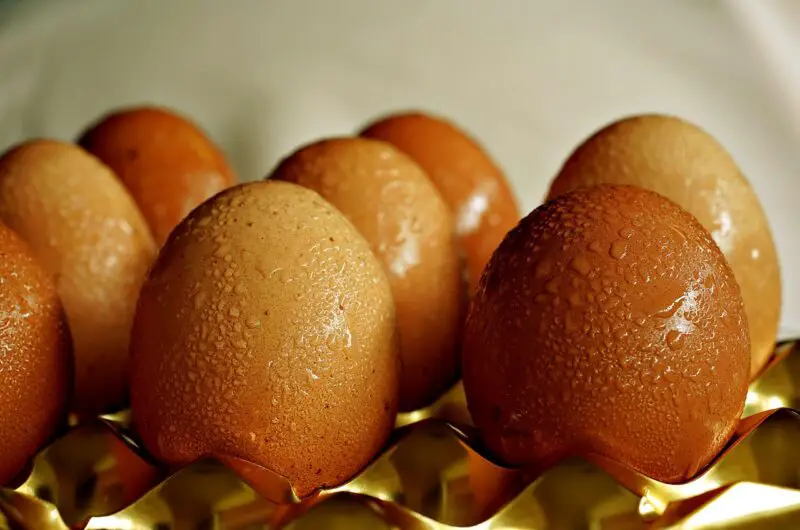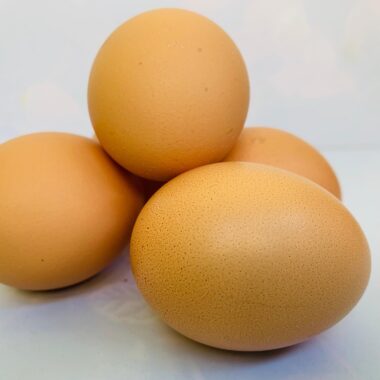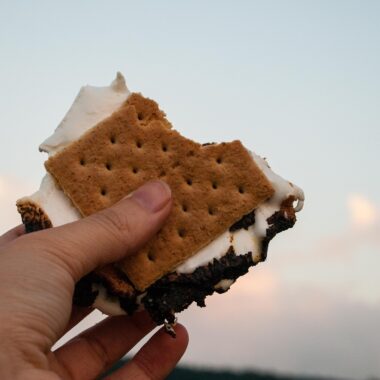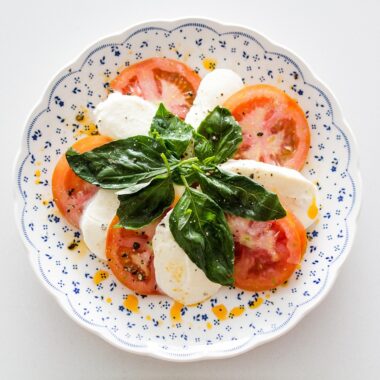Hard-boiled eggs are a kitchen staple—versatile, nutritious, and deceptively simple. Whether you’re whipping up a quick breakfast, prepping a hearty salad, or crafting deviled eggs for a party, the humble hard-boiled egg is a culinary MVP. But let’s be honest: despite their simplicity, hard-boiled eggs can be tricky to get just right. Too often, they emerge with cracked shells, rubbery whites, or that dreaded gray-green ring around the yolk. If you’ve ever wondered why your eggs don’t turn out like the picture-perfect ones in cookbooks, you’re not alone.
The good news? Perfection is within reach. With a little science, a few insider tricks, and some patience, you can master the art of the hard-boiled egg every single time. In this guide, I’ll walk you through the process step-by-step, troubleshoot common mistakes, and share tips to ensure your eggs are flawless—whether you prefer a creamy yolk or a fully set center. Let’s crack into it!
Why Hard-Boiled Eggs Are Worth Mastering
Before we dive into the how-to, let’s talk about why hard-boiled eggs deserve a spot in your cooking repertoire. Eggs are packed with protein, healthy fats, and essential nutrients like choline—all for about 70 calories each. They’re portable, budget-friendly, and endlessly adaptable. From egg salad sandwiches to ramen toppers, a perfectly cooked hard-boiled egg elevates any dish.
But here’s the catch: the difference between a mediocre egg and a perfect one is glaring. A well-cooked hard-boiled egg has a tender white, a yolk that’s just the right consistency for your taste, and a shell that peels off effortlessly. A poorly cooked one? Think chalky yolks, stubborn shells, and a faint whiff of sulfur. The goal here is consistency—eggs you can rely on every time.
The Science Behind the Perfect Hard-Boil
To nail hard-boiled eggs, it helps to understand what’s happening inside that shell. Eggs are made up of water, protein, and fat. When you heat them, the proteins in the white and yolk denature and coagulate, transforming from liquid to solid. The trick is controlling that process so you don’t overdo it.
- The White: Starts setting around 160°F (71°C) and fully firms up by 180°F (82°C). Cook it too long or too hot, and it turns rubbery.
- The Yolk: Begins to solidify at 150°F (65°C) and is fully cooked by 170°F (77°C). Overcooking leads to that gray-green ring—a result of sulfur in the white reacting with iron in the yolk to form ferrous sulfide. It’s harmless but unsightly.
- The Shell: Acts as a barrier, but rapid temperature changes can crack it, while trapped air inside expands and makes peeling a nightmare.
Timing, temperature, and cooling are the levers you’ll pull to get it right. Let’s break it down.
Step-by-Step: How to Make Perfect Hard-Boiled Eggs
Here’s the foolproof method. Follow it closely, and you’ll be peeling eggs like a pro in no time.
What You’ll Need
- Fresh eggs (any size, though medium or large work best)
- A saucepan with a lid
- Cold water
- Ice (for an ice bath)
- A timer (your phone works fine)
- Optional: A slotted spoon or tongs
Step 1: Choose Your Eggs
Freshness matters—but not in the way you might think. Very fresh eggs (laid within a day or two) are harder to peel because the air pocket inside the shell hasn’t had time to expand. Eggs that are 7-10 days old are ideal for hard-boiling. Check the carton’s “sell by” date—about 30 days from packing—and aim for eggs a week or two into that window. If you’re unsure, do the float test: fresh eggs sink in water, older ones float. Slightly older is what you want here.
Step 2: Start with Cold Water
Place your eggs in a single layer at the bottom of a saucepan. Cover them with cold water—about an inch (2.5 cm) above the eggs. Starting with cold water ensures even cooking and reduces the risk of cracking. (Hot water can shock the shells, especially if the eggs are straight from the fridge.)
Pro tip: Add a pinch of salt or a splash of vinegar to the water. It won’t affect the taste, but if an egg cracks, the salt or vinegar helps the white coagulate quickly, minimizing leakage.
Step 3: Bring to a Boil
Set the saucepan over medium-high heat and bring the water to a rolling boil. Don’t crank the heat to max—gentle heating prevents the eggs from bouncing around and cracking. Keep an eye on it; a rolling boil means big, consistent bubbles, not just a simmer.
Step 4: Time It Right
Once the water’s boiling, reduce the heat to low, cover the pan, and set your timer. Here’s where your yolk preference comes in:
- 6-7 minutes: Soft, slightly creamy yolk (not runny like a soft-boiled egg, but not fully set).
- 9-10 minutes: Medium, custardy yolk—perfect for salads or snacking.
- 12-13 minutes: Fully hard-boiled, firm yolk with no gray ring.
For most people, 10-12 minutes is the sweet spot. Timing starts when you cover the pan, not when the water first boils. Consistency is key, so don’t wing it—use that timer.
Step 5: Cool Them Down Fast
When the timer dings, remove the eggs from the heat and plunge them into an ice bath—cold water with plenty of ice. Let them sit for at least 5-10 minutes. This stops the cooking process instantly, preventing overdone yolks and that green ring. It also shrinks the egg slightly inside the shell, making peeling easier.
Step 6: Peel Like a Pro
Tap each egg gently on a hard surface to crack the shell, then roll it between your hands or on the counter to create a web of cracks. Start peeling from the larger, rounded end—that’s where the air pocket usually is. Hold the egg under running water or dip it in the ice bath as you peel; the water helps separate the membrane from the white.
And there you have it: perfectly cooked, easy-to-peel hard-boiled eggs.
Troubleshooting Common Problems
Even with a solid method, things can go awry. Here’s how to fix the most common issues.
Problem 1: Cracked Shells
- Cause: Temperature shock or rough boiling.
- Fix: Start with cold water, not hot, and don’t let the eggs jostle too much. If cracks still happen, don’t sweat it—they’re still edible.
Problem 2: Hard-to-Peel Eggs
- Cause: Eggs are too fresh, or they weren’t cooled properly.
- Fix: Use slightly older eggs and don’t skip the ice bath. Peeling under water helps, too.
Problem 3: Green Ring Around the Yolk
- Cause: Overcooking or slow cooling.
- Fix: Stick to the recommended times and get those eggs into ice water pronto.
Problem 4: Rubbery Whites or Dry Yolks
- Cause: Too much heat or time.
- Fix: Lower the heat after boiling and adjust your timer—less is more if you’re unsure.
Pro Tips for Next-Level Eggs
Want to take your hard-boiled eggs from good to great? Try these:
- Steam Instead of Boil: Place eggs in a steamer basket over boiling water, cover, and steam for 12-15 minutes. Steaming can make peeling even easier and works well for fresh eggs.
- Season the Water: A dash of baking soda raises the water’s pH, loosening the membrane for easier peeling. Use sparingly—too much can affect taste.
- Batch Prep: Hard-boiled eggs keep in the fridge, unpeeled, for up to a week. Peel them as needed to maintain freshness.
- Test One First: If you’re cooking a big batch, boil one egg first to check your timing. Adjust as needed before committing.
Creative Ways to Enjoy Your Eggs
Now that you’ve got a pile of perfect hard-boiled eggs, what’s next? Here are some ideas:
- Classic Deviled Eggs: Mix yolks with mayo, mustard, and paprika for a crowd-pleaser.
- Egg Salad: Chop them up with celery, dill, and a tangy dressing.
- Ramen Topper: Slice in half and nestle into a bowl of steaming broth.
- Snack Attack: Sprinkle with salt, pepper, or everything bagel seasoning for a quick bite.
The Final Word
Making perfect hard-boiled eggs every time isn’t rocket science—it’s kitchen science. With the right technique, a little attention to detail, and some practice, you’ll never have to settle for subpar eggs again. Start with cold water, time it precisely, cool them fast, and peel with confidence. Soon, you’ll be the one dishing out advice to friends who can’t figure out why their yolks keep turning green.
So grab some eggs, fill that saucepan, and get boiling. Perfection awaits—and it’s only a timer away.
Bonus: Quick Reference Chart
| Yolk Preference | Cooking Time (After Boil) | Notes |
|---|---|---|
| Soft, creamy | 6-7 minutes | Slightly set center |
| Medium, custardy | 9-10 minutes | Great for versatility |
| Fully8 hard-boiled | 12-13 minutes | Firm, no green ring |
References for “How to Make Perfect Hard-Boiled Eggs Every Time”
- Egg Cooking Basics
- General knowledge from culinary guides on egg protein denaturation and cooking temperatures (e.g., whites setting at 160°F/71°C, yolks at 150°F/65°C). Widely discussed in food science literature and cooking manuals.
- The Science of the Green Ring
- Understanding of the sulfur-iron reaction causing the gray-green yolk ring, a well-documented phenomenon in food chemistry resources (e.g., ferrous sulfide formation during overcooking).
- Peeling Techniques
- Tips like using older eggs and ice baths, derived from common culinary wisdom found in cookbooks, blogs, and chef recommendations. The role of the air pocket and membrane separation is a standard explanation.
- Timing Guidelines
- Cooking times (6-7, 9-10, 12-13 minutes) are based on consensus from home cooking experiments and professional kitchen standards, often tested and shared across recipe platforms.
- Pro Tips and Variations
- Suggestions like steaming or adding baking soda stem from practical advice popularized by chefs and food enthusiasts in articles, forums, and instructional videos.
- Nutritional Info
- Basic egg nutrition (protein, choline, ~70 calories) aligns with data from dietary resources like the USDA or similar food databases.


















